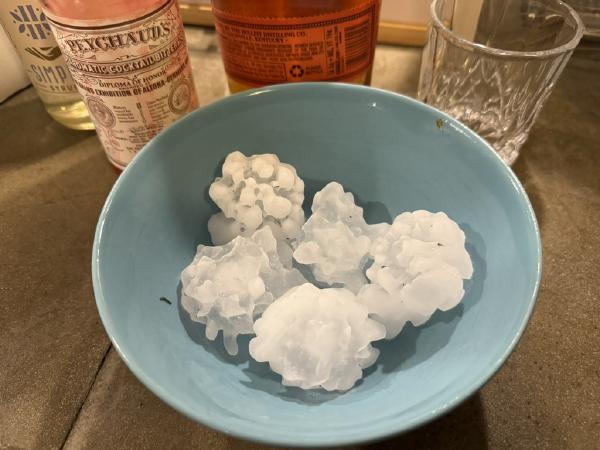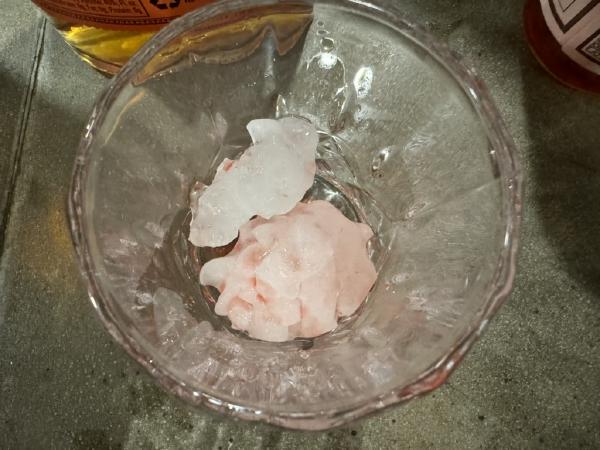The old fashioned is one of my favorite drinks. It’s so easy to make well, and something about a boozy sweet drink makes the dark night sparkle.
The thing about the old fashioned is that it isn’t a recipe, it’s a class, an idea. A platform. Here are some of the things I’ve learned about the old fashioned, and some of my favorite ways to use it.
During COVID lockdowns, when we were inventing lifehacks like ordering enough delivery to save for leftovers and having 47 drinks a day, I read the Wikipedia page for the old fashioned cocktail.
The recipe for the old fashioned dates to the early 1800s, though not by that name. The term "old-fashioned cocktails" dates to 1880,[2] and recipes by that name appear in cocktail books of the late 1880s and 1890s, with Proulx (1888) of Chicago the earliest known.[3][4]
An old fashioned was one of the simpler and earlier versions of cocktails, before the development of advanced bartending techniques and recipes in the later part of the 19th century.[3] The first documented definition of the word "cocktail" was in response to a reader's letter asking to define the word in the 6 May 1806, issue of The Balance and Columbian Repository in Hudson, New York. In the 13 May 1806, issue, the paper's editor wrote that it was a potent concoction of spirits, bitters, water, and sugar; it was also referred to at the time as a bittered sling.[5][6] J.E. Alexander describes the cocktail similarly in 1833, as he encountered it in New York City, as being rum, gin, or brandy, significant water, bitters, and sugar, though he includes a nutmeg garnish as well.[7]
By the 1860s, it was common for orange curaçao, absinthe, and other liqueurs to be added to the cocktail. As cocktails became more complex, drinkers accustomed to simpler cocktails began to ask bartenders for something akin to the pre-1850s drinks. The original concoction, albeit in different proportions, came back into vogue, and was referred to as "old-fashioned".[3][2] The most popular of the in-vogue "old-fashioned" cocktails were made with whiskey, according to a Chicago barman, quoted in the Chicago Daily Tribune in 1882, with rye being more popular than Bourbon. The recipe he describes is a similar combination of spirits, bitters, water, and sugar of seventy-six years earlier.[3]
I find the linguistics alone interesting. There used to be a thing called a “cocktail”, but then they got all fancy, with their “extra ingredients” and “American Spirit cigarettes” and what have you, so people started asking for “an old-fashioned cocktail”. “Cocktails” became a more expansive category and “old fashioned” became such a common way to order that specific drink that it became distinct from the idea of “an old-fashioned cocktail, not one of those newfangled ones”.
But what really struck me was that originally, you could make an old fashioned out of anything you wanted. For one, it’s not a spin on the original old fashioned; it is the classic old-fashioned cocktail. But also, I had easily available liquor that I had never tried in an old fashioned. I had certainly had old fashioneds made with nice tequila before, usually made with agave syrup and orange bitters, and those were good. But one of the first things I tried was gin, and a gin old fashioned is really delicious.
I now try an old fashioned with every liquor I can find.
I recently (finally) started to use saline in my old fashioneds, and it’s improved every single one I’ve made. They say adding salt “heightens” the flavor, which sounds enough like bullshit that I didn’t try this for the longest time. Having now tried it and loved it, I’d describe it as turning the cocktail into something hyperpalatable, like french fries dipped into a chocolate shake, or salted caramel ice cream. It is very good. It also deemphasizes the sugar a bit, so I recommend it especially to people who think that most old fashioneds are too sweet.
Something else I discovered recently which sounded like bullshit but turned out to be great: using several different types of the same liquor can be “complex”, or:
A high-proof/low-proof two-rum combo gives you a sort of Laurel and Hardy situation, with a straight man (the lower proof option) and a zany comic foil (the wilder, higher-proof option). The goal is to create a dramatic interplay between the two rums.
I mean that just sounds silly. But the thing is, I do like piña coladas, and I went on two back to back weekend getaways this summer, and I made two of Peter’s three versions of the piña colada on those trips. The high-end recipe, from which the above quote is excerpted, uses two rums. And he is right! The result was interesting and really, really good. And one night it was too late for the blender so I tried the same thing in a rum old fashioned and goddamned if the result has not become my absolute favorite old fashioned recipe.
Something especially fun about this is the history. High proof rum is sometimes described as “navy strength”. Why?
The rum ration (also called the tot) was a daily amount of rum given to sailors on Royal Navy ships. It was abolished in 1970 after concerns that the intake of strong alcohol would lead to unsteady hands when working machinery.
[...]
Prior to 1655, a sailor's ration of alcoholic beverage was originally beer with a daily ration of one gallon (i.e. eight pints). This official allowance continued until after the Napoleonic Wars. When beer was not available, as it would often spoil easily, it could be substituted by a pint of wine or half a pint of spirits depending on what was locally available. In 1655, the difficulty in storing the large quantities of liquid required led to beer's complete replacement with spirits, with the political influence of the West Indian planters giving rum preference over arrack and other spirits. The half-pint of spirits was originally issued neat; it is said that sailors would "prove" its strength by checking that gunpowder doused with rum would still burn (thus verifying that rum was at least 57% ABV).
Half a pint of rum a day!
You can also go weird by going basic. I am not what you would call a vodka fan, and I’ve been known to say that anything vodka can do, gin can do better. But I have made an old fashioned with vodka recently, and it was actually great in a totally different way than my gin old fashioned. The gin old fashioned is all floral/herbal, but this vodka old fashioned is all baking spices.
One last recipe, another go-to and probably my top recipe until I discovered the dual rum method: mezcal. Tequila can of course be great, and I think that a sotol version is good too, although that one is not usually as popular with my guests. But this mezcal version is my favorite of the bunch.
There’s still a lot I haven’t tried yet. Absinthe, Arak, Cachaça, and Aquavit are all on my short list. And while I have enjoyed scotch, rye, and brandy old fashioneds, I haven’t tried enough of them to have a favorite version.
Oh, one final recommendation: the thunder god’s own ice gives any potion a little extra spell power.




